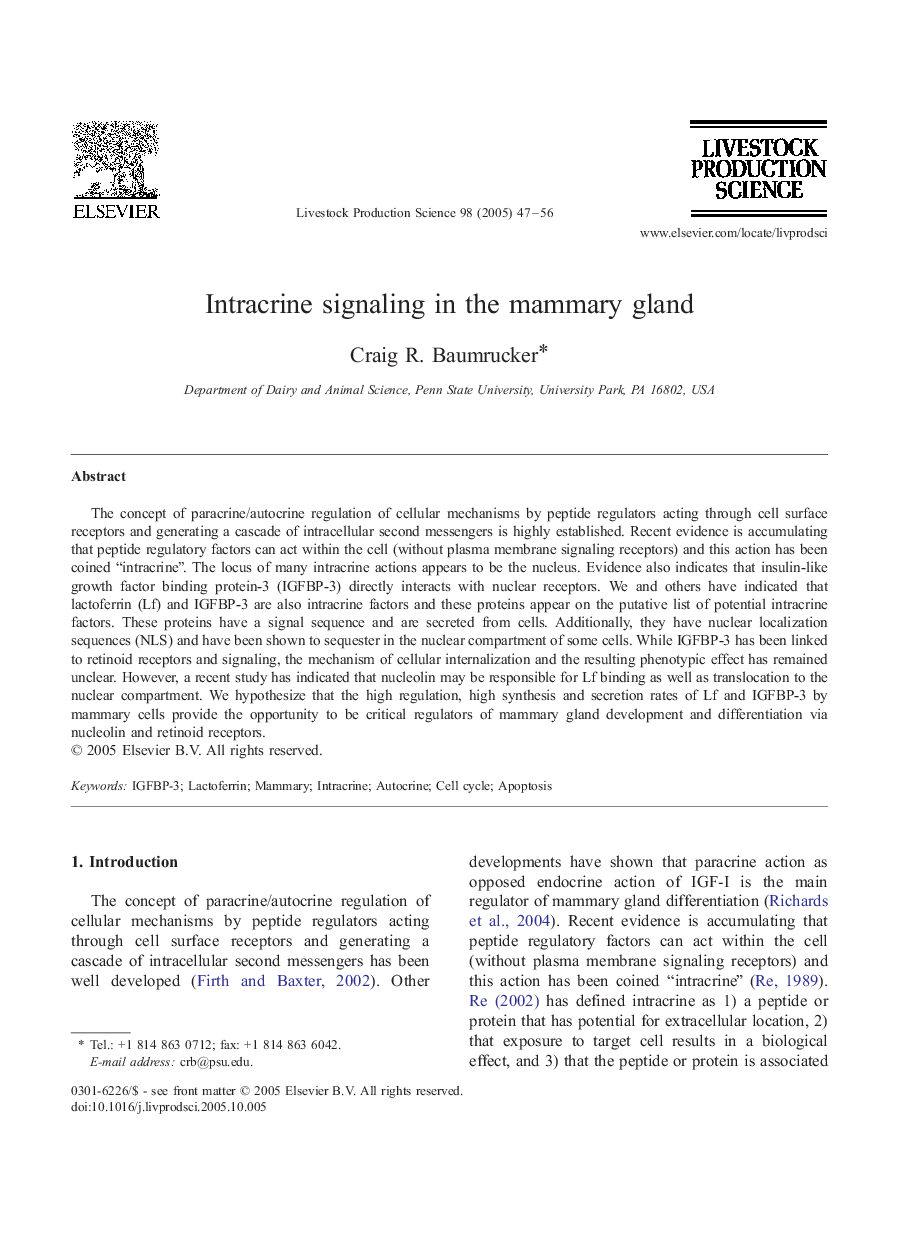| Article ID | Journal | Published Year | Pages | File Type |
|---|---|---|---|---|
| 8982559 | Livestock Production Science | 2005 | 10 Pages |
Abstract
The concept of paracrine/autocrine regulation of cellular mechanisms by peptide regulators acting through cell surface receptors and generating a cascade of intracellular second messengers is highly established. Recent evidence is accumulating that peptide regulatory factors can act within the cell (without plasma membrane signaling receptors) and this action has been coined “intracrine”. The locus of many intracrine actions appears to be the nucleus. Evidence also indicates that insulin-like growth factor binding protein-3 (IGFBP-3) directly interacts with nuclear receptors. We and others have indicated that lactoferrin (Lf) and IGFBP-3 are also intracrine factors and these proteins appear on the putative list of potential intracrine factors. These proteins have a signal sequence and are secreted from cells. Additionally, they have nuclear localization sequences (NLS) and have been shown to sequester in the nuclear compartment of some cells. While IGFBP-3 has been linked to retinoid receptors and signaling, the mechanism of cellular internalization and the resulting phenotypic effect has remained unclear. However, a recent study has indicated that nucleolin may be responsible for Lf binding as well as translocation to the nuclear compartment. We hypothesize that the high regulation, high synthesis and secretion rates of Lf and IGFBP-3 by mammary cells provide the opportunity to be critical regulators of mammary gland development and differentiation via nucleolin and retinoid receptors.
Related Topics
Life Sciences
Agricultural and Biological Sciences
Animal Science and Zoology
Authors
Craig R. Baumrucker,
